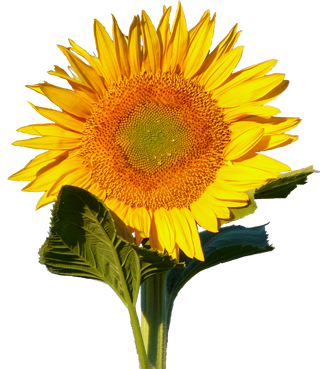
Garden and Plate
The Molecular Biology of Nutrition
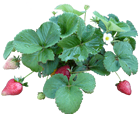







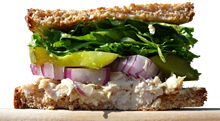

Vitamins as a group are difficult to define. The overall definition of a vitamin has multiple parts, many of which also apply to molecules that are not vitamins. It's the combination of multiple traits that allow a molecule to call itself a vitamin. Things get even more complicated because some of the vitamins don't fit the definition under certain circumstances. Let's look at each aspect of how a vitamin is defined.
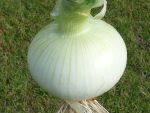
1. Vitamins are molecules that can't be produced by the human body in sufficient amounts. The "sufficient amounts" qualifier makes this part of the definition fuzzy. Most of the vitamins can't be produced by the body at all, but vitamin D, K, and B3 find ways around this. Vitamin D can be produced in the skin when exposed to the sun. Vitamin K can't be produced by human cells, but bacteria in our intestine can produce it and share it with us. We can synthesize vitamin B3 (niacin) from a precursor called tryptophan, but we can't produce tryptophan, so we are still ultimately
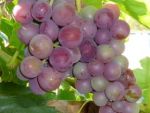 dependent on our diet for vitamin B3. Most vitamins were discovered while trying to find the cause of a deficiency-related disease. It wasn't clear whether the disease was due to the body's inability to produce the vitamin at all, or in amounts too small to be effective.
dependent on our diet for vitamin B3. Most vitamins were discovered while trying to find the cause of a deficiency-related disease. It wasn't clear whether the disease was due to the body's inability to produce the vitamin at all, or in amounts too small to be effective.
2. Vitamins are only needed in very small amounts. All of the vitamins meet this criteria very well. This part of the definition seems designed to exclude other molecules from being defined as vitamins. For example, simple sugars like glucose meet most of the criteria for inclusion in the vitamin camp. People can't produce them, they are organic molecules, and they are essential to good health. They are excluded by the "small amounts" part of the definition.

3. Vitamins are organic molecules (since they have carbon atoms). More specifically, they contain a string of carbon atoms with other atoms attached to the string. All of the vitamins meet this condition. This part of the definition enables exclusion of non-organic essential trace nutrients like the minerals.

4. Vitamins are coenzymes. All of them are used by enzymes to perform tasks that the enzymes can't perform on their own. Vitamin B5 (Pantothenic Acid) is a structural part of Coenzyme A, but the other vitamins all work directly with the active sites on enzymes in reactions that transfer molecular fragments.
There are thirteen vitamins, but each vitamin is actually a family of molecules. Vitamins are defined by their functional capabilities rather than their chemical structure, so multiple chemically different (but usually similar) molecules can be part of the same vitamin family.
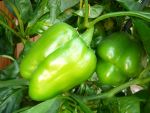
Functional members of this family are called vitamers, while the non-functional molecules from which they are made are precursors. If we use vitamin A as an example, retinal, retinol and retinoic acid are vitamers, and the carotenes are precursors. These molecules are all members of the vitamin A family.
Vitamins are sometimes referred to as coenzymes. This is because enzymes use vitamins as tools. Enzymes are proteins that alter other molecules. Like all proteins they are created using the same twenty amino acids. Enzymes can do a lot with the side chains on these twenty amino acids, but they can't do everything. That's where the vitamins come in. Let's look at the vitamin toolkit to see how they are used by enzymes.
Enzymes use vitamin K like a battery. Vitamin K provides energy for converting one type of amino acid into another. Pyridoxal phosphate (B6) is used to transfer nitrogen atoms from one molecule to another,
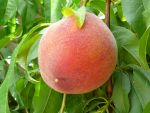 and vitamin B1 (thiamin as TDP) transfers ketone (C=O) groups. Thiamin (B1) and riboflavin (B2) are called prosthetic groups because they permanently attach them-selves to an enzyme, while vitamins like niacin (B3) interact with enzymes while freely moving throughout the cell.
and vitamin B1 (thiamin as TDP) transfers ketone (C=O) groups. Thiamin (B1) and riboflavin (B2) are called prosthetic groups because they permanently attach them-selves to an enzyme, while vitamins like niacin (B3) interact with enzymes while freely moving throughout the cell.

Vitamin A is created from molecules called carotenes that are produced by plants. The carotenes have a ring structure that enable them to change their shape when exposed to certain wavelengths of light. Plants use this ability to add color to flowers and fruit, and to transfer energy during photosynthesis.
Plant-based foods supply us with vitamin A in the form of carotenes, and foods like carrots are especially high in this nutrient. Animals store vitamin A in the liver as retinyl, so liver is also a great source.
Animals convert some kinds of carotene (mostly beta-carotene) into vitamin A for their own use. Vitamin A is one of the few vitamins where its vitamers function in fundamentally different ways. Retinal absorbs light while retinoic acid controls gene expression.
Retinal is the form of vitamin A that prevents blindness. It combines with an opsin protein in the eye to form rhodopsin, which sends signals to the brain. This is how vision works.
When retinal is converted into retinoic acid it gets involved in gene expression. This means that it controls which proteins are created. This impacts a wide variety of processes including fetal development, the immune system and the production of healthy skin.
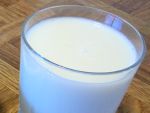
Vitamin D is made in a few kinds of plants (fungi, yeast, and phytoplankton) and animal skins when ultraviolet rays coming from the sun strike the molecules in our cells. Since people are able to produce vitamin D on our own, it might be argued that it's not really a vitamin. But our ability to produce it wasn't known when it was discovered, so it snuck into the vitamin pantheon under false pretenses. Even though we can produce it ourselves, many of us don't spend enough time in the sun to create enough for optimal health, so foods like milk and eggs are fortified with vitamin D in order to prevent the vitamin D deficiency disease called Rickets. Foods that contain vitamin D naturally include mushrooms and tuna.
Vitamin D performs multiple functions in the body, but is best known for its ability to regulate calcium and phosphorus levels in the blood. Calcium and phosphorus are used in many biological processes, and can't be transported throughout the body without vitamin D's help. Vitamin D doesn't transport them itself, but activates genes in a cell's DNA that create two proteins. These proteins are the molecules that provide the transportation service for calcium and phosphorus.
Rickets develops in the absence of vitamin D. Its symptoms include the disruption of processes that depend on calcium and phosphorus. Calcium is a major ingredient in the construction of bones and is used by nerve cells to transmit electrical signals. The transmission of nerve signals is necessary for everything from muscle contractions to the beating of the heart. The most visible symptom of rickets is weak bones in adults and the lack of bone development in children. Muscle spasms can also occur because calcium is used to send the electrical impulses that control the muscles. So don't forget to drink your milk.
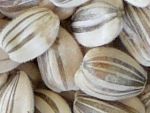
Vitamin E is known as an antioxidant that neutralizes free radicals. It's created in the plastids of plant cells like the chloroplasts that perform photosynthesis. For this reason leafy greens are a great source of vitamin E. Nuts are also a good source because they are high in fat and vitamin E is fat-soluble.
The secret to vitamin E's success as an antioxidant is the way its ring is structured. It can donate an electron that neutralizes a strong free radical without becoming a strong free radical itself. The key here is the word strong. A weak free radical like vitamin E (after it donates an electron) is not powerful enough to strip most other molecules of their electrons because its ring structure redistributes the positive charge created by the missing electron throughout the ring, diluting its power. Other weak antioxidants like vitamin C will give electrons to vitamin E, but neither vitamin can damage important molecules like the ones in cell walls or DNA.
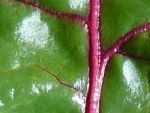
Vitamin K comes in two forms, K1 and K2. K1 is produced by plants which use it as an electron acceptor in photosynthesis. K2 is produced by bacteria in our intestine, which they then share with us. Both types function the same way. The best dietary sources of vitamin K are the leafy greens and liver.
Without Vitamin K your blood won't clot and your bones won't get the calcium they need. Vitamin K doesn't complete these services itself, it alters proteins so they can perform these tasks. Vitamin K acts like a molecular battery. It provides energy for enzymes that alter the structure of amino acids on proteins. The customized proteins then transport the calcium and coagulate the blood.
The human body uses thirteen vitamins. Each one of these vitamins is actually a group of structurally similar molecules that are usually able to convert into each other as needed. Some are water-soluble and some are fat-soluble. This page looks at the vitamins as a group and gives a brief description of each one. Detailed examinations of how each of the vitamins work can be found on the fat-soluble and water-soluble pages, or by clicking on the link for an individual vitamin in the table below.
The detailed articles aren't intended to be comprehensive. Most of the vitamins perform more than one biological function because they work with multiple enzymes on many different molecules in a variety of biological processes. My goal is to describe the molecular structure of each vitamin in a way that reveals its nutritional significance. I accomplish this by examining one specific biological process for each vitamin in great detail at the molecular level in order to understand how the vitamin actually works.
I've embedded photos of fruits and vegetables into the text in order to link this page to nutritional information from the USDA database and emphasize that fruits and vegetables are great sources for vitamins. Hover the mouse over a photo to see what it is and click on the photo to see a list of the nutrients it contains. To find out how some of these fruits and vegetables are grown, go to the Garden Gallery.
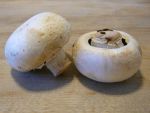
Vitamin B1 (thiamin) is produced in fungi, bacteria and plants. It can be found in most unprocessed foods because it's involved in photosynthesis and respiration. It's found in the highest amounts in whole grains, yeast, nuts, sunflower seeds, pork and liver. In the grains it's found mostly in the outer layer, which is why wheat bran is especially high in thiamin and polished rice is especially low. In many parts of the world thiamin is added back into processed foods like white rice in order to compensate for losses due to processing.
Deficiencies in the diet can cause a disease called beriberi, which affects the nervous system. Symptoms can include pain in the limbs, paralysis due to nerve damage, and even heart failure.
Thiamin (as TDP) is used by enzymes to transfer ketone groups (C=O) from one molecule to another. It works with enzymes as a prosthetic group. This means it's permanently attached to the enzyme.
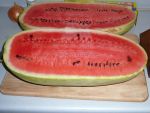
Vitamin B2 (riboflavin) is made in bacteria, fungi, plants and some animals. It's found in a wide variety of foods, usually bound to a protein as part of the FAD molecule, because FAD is a prosthetic group for many enzymes. Yeast, liver, eggs and wheat bran are all good sources of riboflavin.
Riboflavin works by using its three-ring structure to oxidize (remove electrons from) other molecules. It can remove up to two electrons from other molecules before it becomes fully reduced.
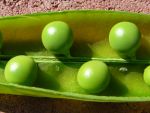
Vitamin B3 (niacin) has two active forms called nicotinic acid and nicotinamide. Only plants and some microorganisms produce the ring structure that's common to both forms of niacin. Nicotinamide is incorporated into the energy carrier molecule called NAD, which is how we consume most of this form of niacin.
Plants mostly synthesize nicotinic acid, but it's often difficult to digest because it tends to bind to other molecules. Deficiencies can result in some diets. Pellagra is the disease associated with niacin deficiencies, and it has many symptoms, including skin lesions, diarrhea, insomnia and dementia. To avoid pellagra some grains and breakfast cereals have been fortified with nicotinic acid.
Nicotinic acid is able to reduce cholesterol levels, and is sometimes given as a supplement for this purpose. This is something that the nicotinamide vitamer of niacin can't do.
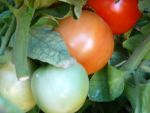
Vitamin B5 (pantothenic acid) is unique as the only vitamin that doesn't contain an active area that changes its structure during the enzymatic reactions in which it takes part. It's a static substructure within the coenzyme A molecule, which plays an essential role in many enzymatic reactions.
Good sources of pantothenic acid include tomatoes, broccoli, potatoes and whole grains. It's widely available in many foods, so deficiencies are rare. When they do take place, they manifest themselves in a wide range of common symptoms. There's no specific disease (like scurvey with vitamin C) that has been tied specifically to vitamin B5, since coenzyme A is fundamental to so many biological processes.
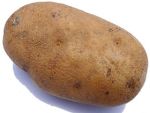
Vitamin B6 (pyridoxine) assists enzymes in many biological processes through its ability to transfer nitrogen atoms (as amine groups) from one molecule to another. This vitamin comes in six forms. Plants create pyridoxine, but pyridoxal phosphate is the most active form in people.
Many foods contain some vitamin B6, but meat, bananas and potatoes are especially high. Vitamin B6 is the most potentially toxic of the water soluble vitamins, but it's difficult to consume too much of it unless you are taking too many vitamin B6 supplements. Toxic levels can lead to conditions like nerve damage and skin lesions.
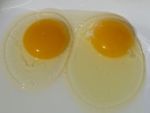
Vitamin B7 (biotin) is present in a lot of foods, but in relatively small concentrations compared to the other B vitamins. It's often bound to protein when consumed, and must be separated from the protein before it can be used. Egg yolks, liver, nuts and legumes are all good sources of biotin.
Biotin transfers carbon atoms from one molecule to another in the form of carboxyl (COOH) groups. It works as a prosthetic group, meaning it stays permanently bound to its enzyme.
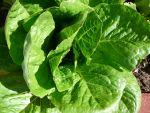
Vitamin B9 (folic acid) isn't active until it's converted into one of several folate forms. The most biologically active form is called tetrahydrofolate (THF). Plants and people can convert folic acid into the folates, but people can't create folic acid from scratch. Avocado and leafy greens are both great sources of B9.
THF transfers single-carbon groups like formate HCOO-), form-aldehyde (OCH2) and methyl (CH3) groups from one molecule to another. These transfers are a necessary part of many processes, including DNA synthesis. If new DNA can't be produced, cells post-pone division. This can result in many health problems, most notably a disease called pernicious anemia.
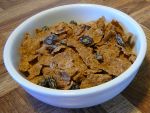
Vitamin B12 (cobalamin) isn't produced by most plants, since they don't need it. Animals need it, but they can't make it on their own. Bacteria is the form of life that synthesizes most vitamin B12 from scratch. It enters our foodchain through the intestines of ruminant animals like cows and sheep. For this reason plants are not a dietary source of vitamin B12. All of the sources are animal-based foods like meat, fish, eggs and dairy. The exception is fortified plant-based foods like breakfast cereals.
Vitamin B12 works with vitamin B9 by transfering methyl groups from B9 to other molecules. Without B12's help, one form of B9 (N5-methyl-THF) can't be reused. A shortage of B12 will cause a shortage of B9, so pernicious anemia can be caused by a lack of either vitamin.
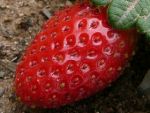
Vitamin C (ascorbic acid) can be found in a variety of plant-based foods, but some of the best sources include citrus, brussels sprouts and strawberries. Vitamin C can be destroyed by heat and diffuses into surrounding water during preparation, so foods are highest in vitamin C content when they're unprocessed.
Vitamin C makes a living by donating one or two electrons to other molecules. It's an antioxidant when it transfers electrons to free radicals, which neutralizes them. It can also transfer electrons to vitamin E, effectively recycling it. Vitamin C donates its electrons to a process that synthesizes collagen. Collagen is a connective molecule that holds the tissues of the body together. A deficiency of vitamin C can result in a shortage of collagen, which is a disease called scurvy.